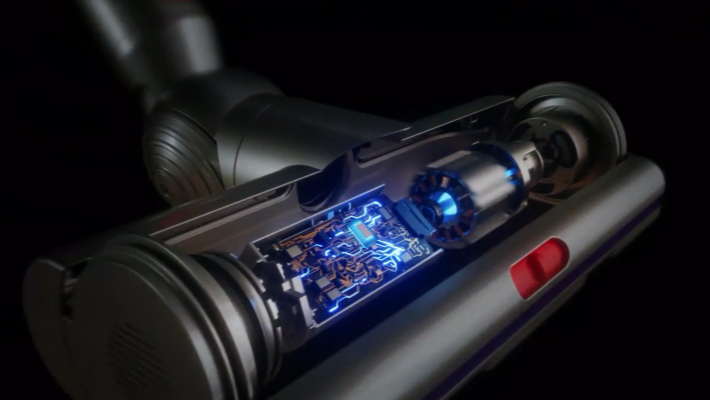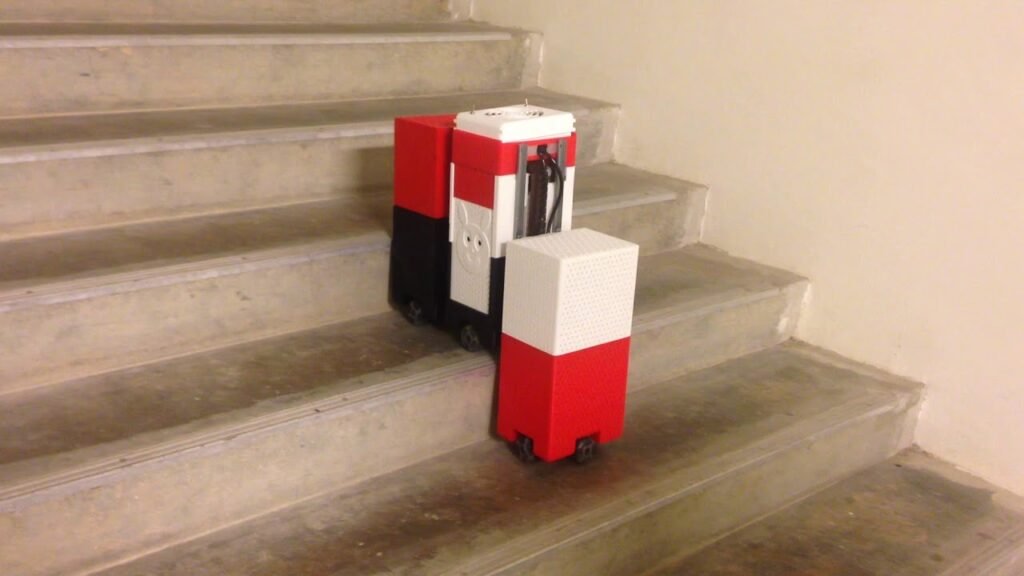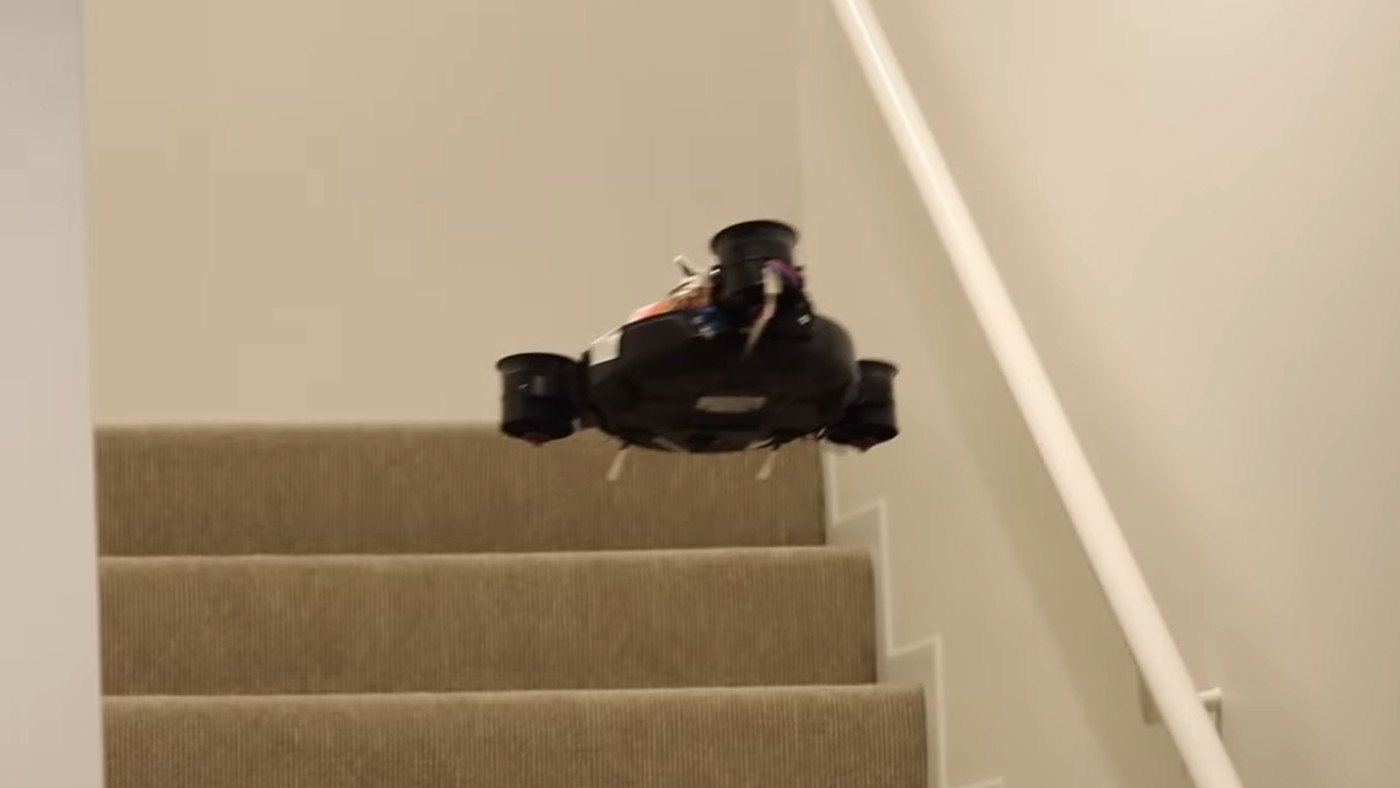Understanding robot sweepers
When it comes to keeping our homes clean, robot sweepers have revolutionized the way we tidy up our floors. These sleek, innovative machines are packed with high-tech features that help us to keep our homes spick and span. However, one question that we often get asked is whether robot sweepers are capable of climbing stairs. In this post, we’ll explore this question in depth, uncovering the truth behind these fascinating machines.
What are robot sweepers?
Before we can answer the question of whether robot sweepers can climb stairs, it’s important to understand exactly what these machines are. Simply put, a robot sweeper is a compact, automated machine that’s designed to clean floors by sweeping up dirt and debris. These machines typically operate autonomously, using sensors to navigate around rooms, avoid obstacles, and detect areas that need extra cleaning attention.
Types of robot sweepers
There are several different types of robot sweepers currently available on the market. These range from low-cost, entry-level models with basic cleaning features to more advanced, high-end models with sophisticated technology. Some robot sweepers even come equipped with additional features such as mopping capabilities, voice recognition, and automated charging stations.
How do robot sweepers work?
So, how do robot sweepers actually work? Generally speaking, the machines use a combination of sensors, algorithms, and brushes to sweep up dirt and debris from floors. They typically come equipped with a rotating brush on the bottom, which spins around to collect dirt and debris. Some models also come with side brushes that can clean around the edges of rooms and furniture.
However, when it comes to stairs, most robot sweepers are not designed to climb them. The machines use sensors to detect changes in elevation and are programmed to stop and turn around when they encounter stairs or other drops. This is because climbing stairs requires a lot of balancing and maneuvering, which most robot sweepers are not capable of doing. It’s important to note that while some high-end models may have stair-climbing capabilities, they are generally not widespread.
In conclusion, while robot sweepers may be incredibly advanced when it comes to cleaning floors, they are not currently capable of climbing stairs. So, if you’re looking for a machine to tackle your multi-story home, you’ll need to stick to traditional vacuums and other cleaning apparatuses. However, when it comes to cleaning the floors on just one level, a robot sweeper is a fantastic choice!

Features of robot sweepers
When it comes to keeping our homes clean, robot sweepers have become a popular option in recent years. They offer convenience and efficiency in keeping floors free of dirt and debris. However, one question that often arises is whether these sweepers are capable of climbing stairs. In this section, we’ll explore the features of robot sweepers and determine whether they are up to the task.
Navigation systems
Robot sweepers are equipped with navigation systems that rely on sensors and mapping technology to move around a room. This technology allows the sweepers to detect obstacles and move around them, but it also means that they are not capable of climbing stairs. The sensors are designed to detect drops or different floor heights in order to avoid falls or damage to the machine.
Cleaning modes
Depending on the model, robot sweepers may offer different cleaning modes, such as spot cleaning or scheduled cleaning. These modes can be set using a smartphone app or a physical remote control. However, no matter what cleaning mode is selected, robot sweepers are unable to climb stairs and will remain confined to the floor level they are placed on.
Battery life
One of the benefits of robot sweepers is their long battery life. Depending on the model, they can clean for up to two hours before needing a recharge. However, if the machine is continually climbing stairs, it will use up more battery energy and require more frequent recharges. Thus, it’s essential to keep this in mind when deciding where to place the sweeper.
Sensors and obstacle avoidance
As mentioned earlier, robot sweepers are designed with sensors that detect obstacles and prevent falls. These sensors also allow the machines to detect stairs and avoid them. If a robot sweeper were to attempt to climb stairs, it would likely result in damage to both the machine and the stairs. Therefore, manufacturers have designed robot sweepers to remain on one level.
Noise levels
Finally, it’s worth noting that robot sweepers emit a certain level of noise while operating, as with any machine. While newer models tend to have quieter operation than older ones, keep in mind that the cleaning process may still be audible within the vicinity of the machine.
In summary, while robot sweepers are a convenient and efficient tool for cleaning floors, they are not capable of climbing stairs. This is due to the technology they are equipped with which prevents the machine from detecting and attempting to climb stairs. However, with their long battery life and efficient cleaning modes, they remain an excellent choice for keeping your floors clean on the ground level.

Robot sweepers and stairs
As a cleaning company, we are always looking for innovative ways to satisfy our clients. One of the things that come to mind is using robot sweepers that can climb stairs, just like humans. But before we invest in these tech-savvy cleaning tools, we need to know if they are capable of climbing stairs.
Can robot sweepers climb stairs?
The simple answer is yes, some robot sweepers can climb stairs. However, not all of them have this capability. Robot sweepers that have the ability to climb stairs usually have special features that allow them to do so. Some of these features include strong motors, extra grippy wheels, and sensors that help them detect edges and gaps.
Factors that affect a robot sweeper’s ability to climb stairs
While some robot sweepers can climb stairs, there are factors that can affect their ability to do so. For instance, steep stairs may be a challenge for some robots because they require more power and traction. Robots can also struggle if the stairs are too narrow or if they have unsteady railings. Additionally, the weight of the robot and the load it is carrying may also affect its ability to climb stairs.
Alternatives to climbing stairs
If robot sweepers can’t climb stairs, there are other cleaning tools we can use. For example, we can use smaller, portable sweepers that can navigate around the stairs. Alternatively, we can use human cleaners to clean the stairs manually.
In conclusion, robot sweepers are capable of climbing stairs, but this depends on several factors. As a cleaning company, we will consider these factors before investing in this technology. But if robots can’t climb stairs, we have alternative cleaning options that can help us deliver excellent cleaning services to our clients.

Considerations when choosing a robot sweeper
When it comes to robot sweepers, there are several factors to consider in order to choose the right one for your home. In this post, we’ll discuss some of the most important considerations, including the type of floor in your home, the size and layout of your rooms, the type of debris you need to clean, and your budget.
Floor type
One of the most important factors to consider when choosing a robot sweeper is the type of floor you have. Most robot sweepers work well on hard floors, such as wood, tile, or linoleum. However, if you have carpeted floors, you’ll want to make sure the robot sweeper you choose is capable of handling them.
Room size and layout
Another important consideration is the size and layout of your rooms. If you have a large open space, you may want to look for a robot sweeper that can cover a larger area without needing to recharge. Similarly, if you have a lot of furniture or other obstacles in your rooms, you’ll want a robot sweeper that can navigate around them easily.
Pet hair and other debris
If you have pets or live in a particularly dusty area, you’ll want to make sure the robot sweeper you choose can handle pet hair and other types of debris. Some robot sweepers come with special brushes designed to pick up pet hair, while others have HEPA filters that can capture even the smallest particles.
Budget
Finally, you’ll want to consider your budget when choosing a robot sweeper. Robot sweepers can range in price from under $100 to over $1000, so it’s important to decide how much you’re willing to spend before you start shopping. Keep in mind that more expensive robot sweepers may come with more features, but that doesn’t necessarily mean they’re the best choice for your needs.
Overall, choosing a robot sweeper that’s right for you requires some thoughtful consideration. By taking into account the type of floor in your home, the size and layout of your rooms, the type of debris you need to clean, and your budget, you’ll be able to find a robot sweeper that meets your needs and keeps your home clean.

Benefits of robot sweepers
When it comes to cleaning floors, there’s no question that robot sweepers are a game changer. Not only do they save us time, but they also provide convenience and efficiency that we never thought was possible. But are these robot sweepers capable of climbing stairs? Let’s explore the benefits of robot sweepers and find out!
Time-saving
One of the biggest benefits of robot sweepers is that they save us time. With just a touch of a button, we can set the robot to start cleaning and move on with our day. Unlike traditional sweepers, there’s no need for us to stand over it and manually clean every inch of the floor. The robot does it all for us, leaving us time to tackle other important tasks. And with the ability to climb stairs, we can trust that the robot will clean every floor of our home, without any extra effort on our part.
Convenience
Another huge benefit of robot sweepers is the convenience they provide. With their compact size, these sweepers can easily maneuver under furniture and into tight spaces that we may struggle to reach with traditional sweepers. They’re also great for homes with pets, as they can quietly clean up pet hair and dander throughout the day, without disturbing our furry friends. And with the ability to climb stairs, we no longer have to worry about lugging heavy sweepers up and down the stairs, making cleaning our homes more convenient than ever before.
Efficiency
Robot sweepers are also incredibly efficient at cleaning. With advanced sensors and algorithms, these sweepers can detect and navigate around obstacles, ensuring that every inch of our floors are cleaned thoroughly. And with the ability to climb stairs, we can trust that they won’t miss a spot, no matter where in our homes they’re cleaning.
Health benefits
Finally, robot sweepers can provide health benefits for us and our homes. With their HEPA filters, these sweepers can capture small particles like dust and allergens, improving the air quality in our homes. Additionally, with the ability to climb stairs, they can also clean hard-to-reach areas like staircases that can often collect dust and debris.
In conclusion, the benefits of robot sweepers are clear. From time-saving and convenience to efficiency and health benefits, they’re a great addition to any home. And with their ability to climb stairs, we can trust that they’ll clean every inch of our homes, without any extra effort on our part. So why not invest in a robot sweeper today and experience the benefits for yourself?
Frequently Asked Questions
Do robot sweepers need to be charged after every use?
No, robot sweepers do not need to be charged after every use. Most robot sweepers have a battery life that can last for several cleaning sessions before needing a recharge. However, it is important to remember to charge the robot sweeper before its battery level becomes critically low.
Do robot sweepers work on all floor types?
Yes, most robot sweepers are designed to work on a variety of floor types, including hardwood, tile, carpet, and more. However, it is important to check the manufacturer’s specifications to ensure that the robot sweeper you choose is suitable for your specific floor type.
Are robot sweepers loud?
Robot sweepers are generally designed to be quiet so as not to disturb the occupants of the home or office while they are cleaning. However, some models may be louder than others, and it is important to check the noise level before making a purchase.
How often do robot sweepers need maintenance?
Most robot sweepers require minimal maintenance, such as emptying the dustbin and cleaning the brushes. However, it is important to check the manufacturer’s specifications for any additional maintenance requirements, such as replacing the filters.
Can robot sweepers pick up pet hair?
Most robot sweepers are equipped with brushes and suction that can effectively pick up pet hair. However, it is important to check the manufacturer’s specifications to ensure that the robot sweeper you choose is suitable for your specific pet hair needs.
Are robot sweepers safe for pets and children?
Robot sweepers are generally considered safe for pets and children, as long as they are used according to the manufacturer’s instructions. However, it is important to supervise pets and children while the robot sweeper is cleaning to prevent any accidents.
What is the lifespan of a robotic sweeper?
The lifespan of a robotic sweeper can vary depending on the model and how well it is maintained. However, most robot sweepers can last for several years with proper care.
What is the warranty on a robot sweeper?
The warranty on a robot sweeper can vary depending on the manufacturer and the model. However, most robot sweepers come with a one or two-year limited warranty that covers defects in materials and workmanship. It is important to read the warranty carefully before making a purchase to understand what is covered and for how long.
